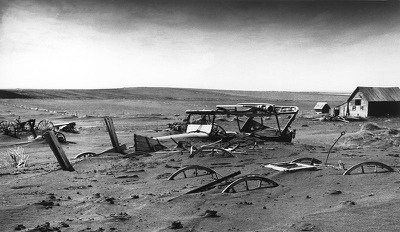Dust Bowl Rielly Fronczak
Use one of the services below to sign in to PBS: You've just tried to add this video to your Watchlist so you can watch it later. But first, we need you to sign in to PBS using one of the services below.
Wayne Lewis, whose parents stayed until the dust bowl was farmable again, said of the aquifer, “We want it now – and if it makes money, it’s a good idea. But if the things we’re doing are going to mess up the future, it wasn’t a good idea. Don’t deal in the moment. Take the long term look at things.
You’ll be able to manage videos in your Watchlist, keep track of your favorite shows, watch PBS in high definition, and much more! You've just tried to select this program as one of your favorites. But first, we need you to sign in to PBS using one of the services below.

You’ll be able to manage videos in your Watchlist, keep track of your favorite shows, watch PBS in high definition, and much more! To get you watching PBS in high definition we need you to sign in to PBS using one of the services below. You'll be able to manage videos in your Watchlist, keep track of your favorite shows, watch PBS in high definition, and much more!
. Prather, William S. 1993-01-01 A device for use in making spectrophotometric measurements of fluid samples. In particular, the device is a measurement cell containing a movable and a fixed lens with a sample of the fluid therebetween and through which light shines. The cell is connected to a source of light and a spectrophotometer via optic fibers. Movement of the lens varies the path length and also pumps the fluid into and out of the cell. Unidirectional inlet and exit valves cooperate with the movable lens to assure a one-way flow of fluid through the cell.
A linear stepper motor controls the movement of the lens and cycles it from a first position closer to the fixed lens and a second position farther from the fixed lens, preferably at least 10 times per minute for a nearly continuous stream of absorption spectrum data. Cheng, Dan Dan; Sun, Jian Ping; Chai, Yuan; Zhu, Yi Yong; Zhao, Min; Sun, Guang Yu; Sun, Xing Bin 2016-08-01 Pseudomonas syringae pv. Tabaci (Pst) is a hemi-biotrophic bacterial pathogen that causes the formation of brown spots named wildfire disease.
Pst has received considerable attention in recent years. However, most of the studies focused on the tolerance and defense mechanisms of the host and non-host plants against Pst infection and a toxin originally described as being from Pst named tabtoxin, little information is available on the photosynthetic performance of tobacco leaves after Pst infection.
Dust Bowl Reilly Fronczak 2017
Exploring the effects of Pst on the photosystem Ⅱ (PSⅡ) will not only help in clarifying tobacco-Pst interaction mechanisms, but also deepen the understanding of bacterial pathogen disease from a physiological perspective. By analyzing chlorophyll a fluorescence transient, performing western blot of thylakoid membrane and measuring the content of reactive oxygen species (ROS) and total chlorophyll, the effects of Pst on PS2 in tobacco were studied under light (200 μmolm -2 s -1 ) or dark conditions.
The results showed that chlorophyll content significantly decreased and significant chlorosis of the infiltrated zone was observed compared to the untreated ones, and tobacco leaves exhibited a visible and overt wildfire symptom at 3 days post Pst infection (dpi) under light and dark conditions. The H 2 O 2 content increased at 3 dpi compared to untreated ones in tobacco leaves under light and dark conditions, and was much higher under light than dark condition. Besides, markedly increase of the normalized relative variable fluorescence at the K step (W K ) and the relative variable fluorescence at the J step (V J ), significant decrease of maximal quantum yield of PS2 (F v /F m ) and density of Q A - reducing PS2 reaction centers per cross section (RC/CSm) were observed in tobacco leaves after Pst infection at 3 dpi under light and dark conditions. Moreover, inhibition of the K and J steps was more pronounced in the dark, as indicated by the greater increase of W K. Yeargin, Susan W; Cahoon, Erin; Hosokawa, Yuri; Mensch, James M; Dompier, Thomas P; Kerr, Zachary Y 2017-11-01 Our study describes youth football (YFB) environmental conditions and the associated heat index (HI) risk category. An observational research design was utilized. Independent variables included month, time, event, and geographic location.
Dust Bowl Reilly Fronczak Net Worth
Main outcome variables were frequency of events, average HI, and corresponding risk categorization. The HI was recorded with the day and time for each YFB event across 2 YFB seasons. Nearly half (49.8%) of events were in a high HI risk category and 20.0% should have been cancelled.
The hottest HI values were recorded in July and August (83.2 ± 9.4°F to 87.2 ± 10.9°F; 24.0% of YFB events). The 7 to 10 am time frame was cooler (67.7 ± 14.5°F; 6.3% of YFB events) than other time frames ( P.